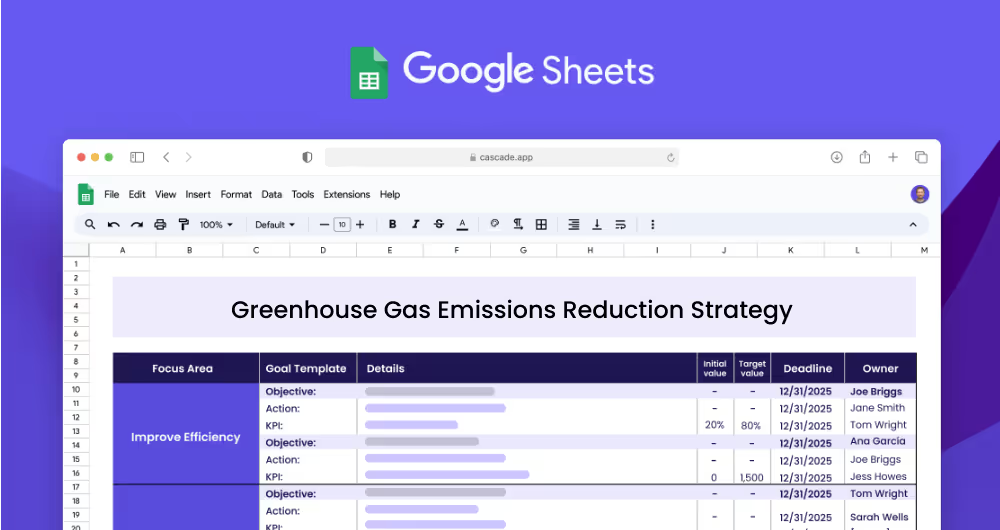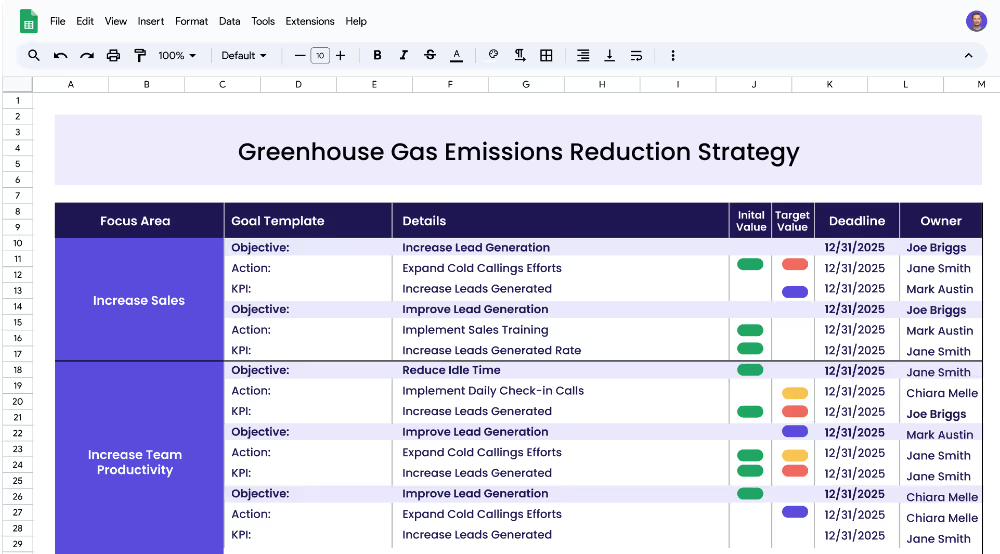A greenhouse gas emissions reduction strategy is a plan of action that organizations take to reduce emissions of greenhouse gases, such as carbon dioxide and methane, which are the primary drivers of global warming. This type of strategy is necessary for organizations to meet their sustainability goals and comply with environmental regulations. It involves setting targets, implementing initiatives, and tracking progress over time.
Each focus area has its own objectives, projects, and KPIs to ensure that the strategy is comprehensive and effective.
This greenhouse gas emissions reduction strategy template is designed to help organizations create a comprehensive plan for reducing their emissions. This template provides guidance on how to define focus areas, set objectives, develop initiatives, and track progress toward meeting targets. It can be used by businesses, institutions, and governments to create a framework for reducing their carbon footprint and meeting sustainability goals.
A focus area is a broad topic that your strategy should address. For example, a focus area could be reducing greenhouse gas emissions, increasing energy efficiency, or increasing recycling. It is important to clearly define your focus areas so that you have a clear direction for your strategy.
Objectives are the specific goals that you want to achieve within each focus area. Each objective should have a measurable target associated with it. Examples of some objectives for the focus area of Reduce Greenhouse Gas Emissions could be: Increase Energy Efficiency, and Replace Fossil Fuels with Renewable Energy Sources.
KPIs, or key performance indicators, are metrics that you can use to measure your progress towards achieving a given objective. An example of a KPI for the focus area of Reduce Greenhouse Gas Emissions could be: Reduce energy consumption by 10%. This KPI will help you track your progress towards achieving your objective.
Projects are the initiatives or programs that you implement in order to reach your KPIs. For example, if your KPI is to Reduce energy consumption by 10%, you could implement a project that involves installing energy-efficient systems. Projects should be specific and measurable in order to track their progress.
If you’re ready to accelerate your strategy and see faster results, Cascade Strategy Execution Software is your next step. Unlike spreadsheets that can slow down your progress, Cascade offers a dynamic platform with tools designed specifically to enhance strategic execution. With real-time updates, centralized collaboration, and automated reporting, Cascade can help you gain greater control and visibility over your strategies. You can track progress, adjust strategies quickly, and maintain alignment across all levels. Sign-up for free or book a demo with one of our strategy experts to start optimizing your strategic execution today.


